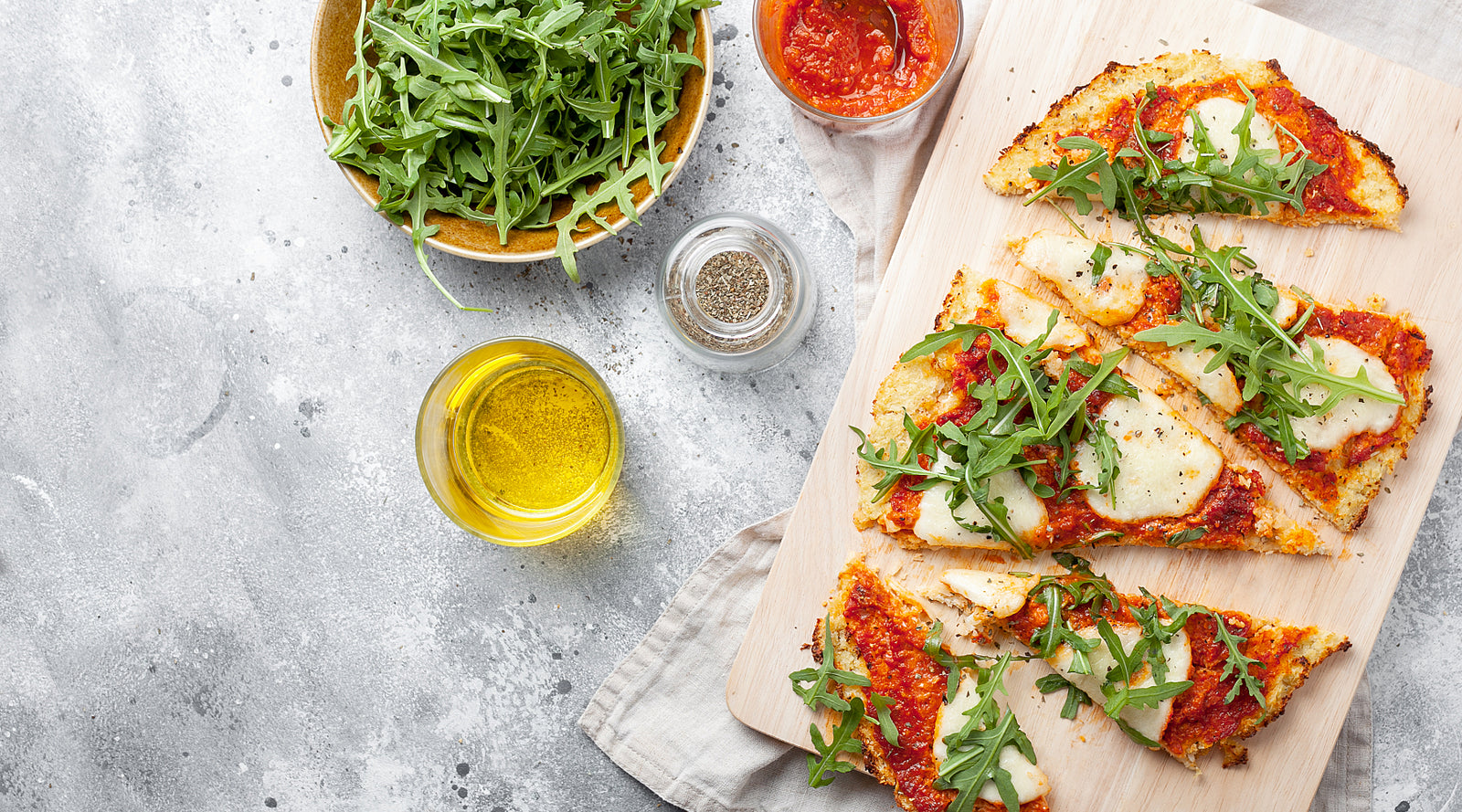Transitioning to a healthy lifestyle doesn't mean you have to give up your typical Western diet favorite foods. Simple healthy food swaps can promote optimal health while still enjoying some of the most popular Western meals and traditional holiday foods. It's all about learning how to make a few nutritional swaps so you can still enjoy the foods your love without compromising your health.
The first thing to remember is you don't have to choose an all-or-nothing approach to the foods you consume. You can enjoy a meal from your favorite restaurant from time to time. It's your day-to-day habits that matter most. When it comes to those habits, making healthy food swaps over time can make a big difference — that's what makes it possible for you to have your cake and eat it too!
Let's jump into how you can enjoy an All-American diet more often, just in a healthier way.
The food you consume at every meal impacts your body on a cellular level. Overconsumption or increased consumption of highly processed foods and drinks simply isn't good for your health on a daily basis. This food is typically filled with additives, sugar, unstable fats, and preservatives. It's important to consume these foods in moderation, as they can be low in nutrients and fiber and they can put your blood sugar levels on a roller coaster ride. Plus, some of these processed foods are also full of ingredients the human body isn't meant to digest, increasing your toxic load.
The combination of high sugar and fat can be easy to overeat. Unfortunately, many of our "All-American" favorites include this combination.
But the good news is, you can still enjoy a burger, a hot dog, and even a few slices of pizza more often by creating your own whole-food version with ingredient swaps that add more nutrients, fiber and less inflammatory load to your body. Here's how...
Choose a gluten-free base, add organic tomato sauce, and top it with lots of vegetables. Or to take it a step further try a whole food base made with cauliflower or nuts and seeds. Consider mushrooms, peppers, and even some herbs like basil. Then, sprinkle a light layer of organic cheese on top or opt for fresh goat cheese instead. Serve the pizza with a side salad, and make your own dressing with extra virgin olive oil, lemon and herbs.
Go bunless, or using two pieces of crunchy lettuce like romaine or even halving a portobello mushroom are all healthy food swaps for buns. Favor grass-fed and finished meat when possible or even make your own plant-based burger patties with chickpeas or black beans. Remember, most sauces put on burgers have a lot of added sugar. If you make your own sauce, you can control what ingredients go in — without sacrificing flavor. Last but not least, don't forget the side of fries. Opt for some easy home-baked wedges.
As your base, choose a gluten-free taco shell or use lettuce wraps or simply create a taco bowl with all of your favorite fillings. Swap out the meat for a mixture of beans and chopped mushrooms, seasoned with classic taco seasoning. Then, choose from an array of your favorite veggies to add — peppers, onions, tomatoes, avocado, zucchini, the list goes on. Add in organic spices, top with cilantro or lemon juice, sub a spoonful of plain Greek yogurt for sour cream, and enjoy.
Moderation is key when it comes to alcohol. Try alternating an adult beverage with water to stay hydrated or focus on fun mocktail substitutes, like seltzer drinks made with citrus juices. You can also combine your favorite sparkling water with a couple of squeezes of lemon or lime juice and some mint leaves! Simple as that.
If you're feeling overwhelmed, remember that it's OK to start small! Begin where you are, and start by making changes to one meal at a time. Look for easy opportunities to introduce more nutritious foods into your diet and make healthy food swaps. For example, a simple starting point could be replacing a bagel breakfast with a simpleshake or whole food bar, even if you keep everything else the same. Then you can gradually add more nutritious substitutes day by day. Remember, it's not about restriction — it's about replacing certain foods with healthier options more consistently, and enjoying whatever else you like occasionally.
Another excellent strategy to improve your diet is to gradually build up your veggie intake until you're eating 7–9 cups per day. Even if you continue eating unhealthier options occasionally, this will provide additional nutrient support and start to reduce the amount of space in your diet for more processed foods.
And lastly, keep in mind that moderation is key. You don't have to give up all your favorite foods forever! If you enjoy what you want a couple of times a week and eat healthy every other day, you'll appreciate your favorite All-American treats even more.
For a whole lot more ideas, inspiration, support and recipes - join our global online Facebook community.
